Understanding Percocet Addiction
Learn about Percocet addiction & abuse
Percocet is a prescription painkiller that is comprised of oxycodone and acetaminophen that is typically administered to patients who are suffering from moderate to severe pain. Under the supervision of the prescribing physician, Percocet can offer much-needed relief in times of healing from bodily trauma. But like its other prescription painkiller counterparts, this medication has become widely abused due to the sense of relaxed euphoria it can create when consumed outside of its intended purpose, or in doses exceeding the recommended use.
Many men and women who are prescribed Percocet by their doctors use the medicine as directed, and never go on to battle an addiction. However, for some, the allure of a painkiller-induced high can prove to be overwhelmingly addictive, causing them to develop a chemical dependence on the substance. Over time, individuals who are abusing Percocet may develop a tolerance for the drug, requiring more of the substance to achieve their desired high. This scenario is evidence that a person has developed Percocet use disorder, and will need professional help to overcome his or her addiction.
From cardiovascular damage and liver problems, to legal troubles and fractured relationships, the negative impact of a Percocet use disorder is vast. And without seeking treatment for Percocet abuse, individuals who are afflicted by this condition will experience a worsening effect of these outcomes over time. But by partnering with a program that offers supports specifically designed to address painkiller addiction, individuals can halt the negative spiral of addiction and return to the substance-free lives they both deserve and desire.
Statistics
Percocet abuse statistics
Everywhere you look, there is evidence that prescription painkiller abuse is on the rise. Drugs like Percocet are in part responsible for the sharp rise in overdoses that account for the increase in tragic loss of life from drug abuse that has been recently seen across the nation. The statistics are staggering, and the U.S. Centers for Disease Control and Prevention (CDC) recently reported that the annual prescription drug overdose death rate in the United States increased by 265% among men, and by 400% among women during the first ten years of the 21stcentury.
Causes & Risks
Causes and risk factors for Percocet abuse
While no one cause can be cited in particular, there are some factors that may lead one to become addicted to Percocet, such as:
Genetic: Having a first-degree relative who struggles with issues of addiction may place one at a greater risk for developing a Percocet use disorder for him or herself. Also, certain hereditary personality traits such as impulsivity may also contribute to the likelihood that one may engage in substance abuse.
Environmental: When a child is exposed to drug and/or alcohol abuse within his or her immediate surroundings early in life, this may lead him or her to develop a substance use disorder later in life. This may be due to the fact that this early exposure can serve to normalize addictive behavior as a means of coping with distress.
Risk Factors:
- Gender (women are at increased risk for Percocet dependence)
- Having a family history of mental illness
- Impulsivity
- Being prescribed Percocet or otherwise having access to this medication
- Having a family history of substance abuse and addiction
- Novelty-seeking personality
- Prior substance abuse and/or mental illness
Signs & Symptoms
Signs and symptoms of Percocet abuse
The following list outlines some of the indicators that may signal that a person has developed a Percocet use disorder:
Behavioral symptoms:
- Abusing Percocet even after prior use has resulted in negative effects
- Social withdrawal
- Taking Percocet in greater quantities or for a longer period of time than intended
- Attempting but being incapable of reducing one’s Percocet use
- Abusing Percocet when it is clearly dangerous to do so, such as when also ingesting other addictive substances or when operating a motor vehicle
- Trying to borrow or steal Percocet
- Attempting to obtain a fraudulent prescription for Percocet, or acquiring the drug through another illicit means
- Trying to borrow or steal money
Physical symptoms:
- Sleep problems, including insomnia
- Exhaustion
- Fatigue
- Losing weight
- Constipation
- Dramatically slowed heart rate
- Shallower than normal breathing
- Slurring speech
- Withdrawal symptoms when not using Percocet
- Problems with balance, coordination, and motor skills
Cognitive symptoms:
- Loss of ability to focus and/or concentrate
- Problems with memory and judgment
Psychosocial symptoms:
- Mood swings
- Agitation
- Anger and aggression
Effects
Effects of Percocet abuse
Left untreated, a person who abuses Percocet will continue to experience negative effects, including many of the following:
- Eye problems
- Damage to heart and lungs
- Development and/or exacerbation of co-occurring mental health problems
- Injuries sustained due to Percocet-related impairments
- Family discord
- Strained or ruined interpersonal relationships
- Job loss and chronic unemployment
- Financial ruin
- Suicidal ideation
- Suicide attempts
- Sexual dysfunction
- Social withdrawal
- Homelessness
- Arrest, incarceration, and other legal problems
Co-Occurring Disorders
Percocet abuse & co-occurring disorders
Substance abuse and mental health concerns often occur simultaneously, and there are some conditions that are known to accompany the diagnosis of a Percocet use disorder, including the following:
- Other substance use disorders
- Anxiety disorders
- Bipolar disorders
- Posttraumatic stress disorder (PTSD)
- Depressive disorders
- Antisocial personality disorder






